 W
WThe portrayal of Indigenous people of the Americas in popular culture has oscillated between the fascination with the noble savage who lives in harmony with nature, and the stereotype of the uncivilized Red Indian of the traditional Western genre. The common depiction of Indigenous Americans and their relationship with European colonists has changed over time. Today indigenous Americans live completely differently than they once did, yet retain much of their cultural beliefs and traditional practices.
 W
WStereotypes of indigenous peoples of Canada and the United States include many ethnic stereotypes found worldwide which include historical misrepresentations and the oversimplification of hundreds of indigenous cultures. Negative stereotypes are associated with prejudice and discrimination that continue to impact the lives of indigenous peoples.
 W
WThe Amityville Horror is a 2005 American horror film directed by Andrew Douglas and starring Ryan Reynolds, Melissa George and Philip Baker Hall. Written by Scott Kosar, it is based on the novel The Amityville Horror by Jay Anson and is a remake of the 1979 film from the same name. It is the ninth film in the Amityville Horror film series, which documents the experiences of the Lutz family after they move into a house at 112 Ocean Avenue, Long Island. In 1974, real-life mass murderer Ronald DeFeo Jr. killed six members of his family at 112 Ocean Avenue, Amityville, New York.
 W
WThe Apache Kid is a fictional Old West character in the Marvel Comics universe, mostly seen in stories from Marvel's 1950s precursor, Atlas Comics. This character was named after, but is unrelated to, the real-life Native American man known as The Apache Kid (Haskay-bay-nay-natyl).
 W
WAsterix and the Great Crossing is the twenty-second volume of the Asterix comic book series, by René Goscinny (stories) and Albert Uderzo (illustrations).
 W
WBitter Tears: Ballads of the American Indian is a 1964 concept album, the twentieth album released by singer Johnny Cash on Columbia Records. It is one of several Americana records by Cash. This one focuses on the history of Native Americans in the United States and their problems. Cash believed that his ancestry included Cherokee, which partly inspired his work on this recording. The songs in this album address the harsh and unfair treatment of the indigenous peoples of North America by Europeans in the United States. Two deal with 20th-century issues affecting the Seneca and Pima peoples. It was considered controversial and rejected by some radio stations and fans.
 W
W"The Black Stranger" is a fantasy short story by American writer Robert E. Howard, one of his works featuring the sword & sorcery hero Conan the Cimmerian. It was written in the 1930s, but not published in his lifetime. When the original Conan version of his story failed to find a publisher, Howard rewrote "The Black Stranger" into a piratical Terence Vulmea story entitled "Swords of the Red Brotherhood".
 W
WThe cigar store Indian or wooden Indian is an advertisement figure, in the likeness of a Native American, used to represent tobacconists. The figures are often three-dimensional wooden sculptures several feet tall – up to life-sized. They are still occasionally used for their original advertising purpose, but are more often seen as decorations or advertising collectibles, with some pieces selling for hundreds of thousands of dollars. People within the Native American community often view such likenesses as a caricature or as depictions that perpetuate stereotypes, drawing an analogy to the African-American lawn jockey.
 W
W"Crawford’s Defeat by the Indians" is an early American folk ballad principally written by Doctor John Knight, survivor of the 1782 Crawford Expedition. The expedition was intended to destroy American Indian towns along the Sandusky River and was one of the final operations of the American Revolutionary War. The ballad, "Crawford's Defeat," contains a great deal more history than poetry, however. It was long after a favorite song upon the frontier and was sung to various tunes. In fact, Doctor Knight's narrative was an immediate success. Its depiction of a brave officer's death at the hands of fiendish savages drew wide admiration and scenes of a rolling landscape delighted eastern land speculators. Though a year elapsed before Indian Atrocities: Narratives of the Perils and Sufferings of Dr. Knight and John Slover was printed, the delay apparently did nothing to reduce its appeal. If anything, the delay probably increased public interest, for all the while the ballad, "Crawford's Defeat," was being sung. Another ballad, titled "Saint Clair's Defeat", was later based on "Crawford's Defeat". It depicts the Battle of the Wabash, which was fought on November 4, 1791, in the Northwest Territory between the United States and the Western Confederacy of American Indians.
 W
WDudes is a 1987 American independent film directed by Penelope Spheeris, written by Randall Jahnson, and starring Jon Cryer, Catherine Mary Stewart, Daniel Roebuck, and Lee Ving. A Western revenge story in a contemporary setting, its plot concerns three punk rockers from New York City who attempt to make their way to California. When one of them is murdered by a vicious gang leader, the other two, played by Cryer and Roebuck, find themselves fish out of water as they pursue the murderer from Arizona to Montana, assisted by a tow truck driver played by Stewart.
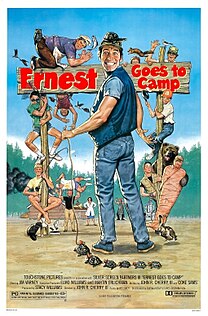 W
WErnest Goes to Camp is a 1987 American comedy film directed by John R. Cherry III and starring Jim Varney. It is the second film to feature the character of Ernest P. Worrell and was shot at Montgomery Bell State Park. It was also the first Ernest film to be distributed by Touchstone Pictures. This film also marks Iron Eyes Cody's final appearance on screen.
 W
WFreedom Project is a Japanese promotional project by Nissin Cup Noodles for their 35th anniversary in 2006. As part of the project, the 7-part OVA series, titled Freedom, was commissioned with and designed by Katsuhiro Otomo serving as the character and mecha designer. The series is directed by Shuhei Morita, creator of the award-winning animation short Kakurenbo, and is authored by celebrated writer Dai Satō, Katsuhiko Chiba and Yuuichi Nomura. The series openly displays its sponsor's product placement in numerous scenes in which characters are shown consuming Nissin Cup Noodles.
 W
WThe Girl Who Chased Away Sorrow (1999) is a book by Ann Turner, part of the Dear America book series, fictional diaries of teenage girls during different parts of American history.
 W
WThe word "How" is a pop culture Anglicization of the Lakota word háu, a Lakota language greeting by men to men. The term how is often found in stereotypical and outdated depictions of Native Americans, made by non-Natives, in some Hollywood movies and various novels, e.g. those of James Fenimore Cooper or Karl May.
 W
W"Indian Camp" is a short story written by Ernest Hemingway. The story was first published in 1924 in Ford Madox Ford's literary magazine Transatlantic Review in Paris and republished by Boni & Liveright in Hemingway's first American volume of short stories In Our Time in 1925. Hemingway's semi-autobiographical character Nick Adams—a child in this story—makes his first appearance in Indian Camp, told from his point of view.
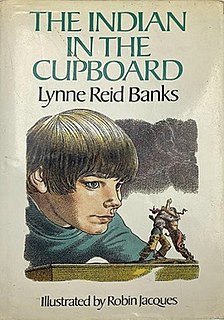 W
WThe Indian in the Cupboard is a low fantasy children's novel by the British writer Lynne Reid Banks. It was published in 1980 with illustrations by Robin Jacques (UK) and Brock Cole (US). It was later adapted as a 1995 children's film of the same name. Later books in the series were illustrated by Piers Sanford (later).
 W
WThe Indian-head test pattern is a test card that was introduced in 1939 by RCA of Harrison, New Jersey, for calibration of the RCA TK-1 monoscope. It was widely used by television stations worldwide during the black-and-white television broadcasting era. It features a drawing of a Native American wearing a headdress along with numerous graphic elements that test different display aspects.
 W
WIt Chapter Two is a 2019 American epic supernatural horror film and a sequel to the 2017 film It, both based on the 1986 novel by Stephen King. The film is directed by Andy Muschietti, returning from the first film, with a screenplay by Gary Dauberman. Set in 2016, 27 years after the events of the first film, it stars Jessica Chastain, James McAvoy, Bill Hader, Isaiah Mustafa, Jay Ryan, James Ransone, Andy Bean, and Bill Skarsgård, who returns as Pennywise the Dancing Clown. It is the second installment of the It film series and centers on the Losers Club reuniting from their various lives apart from each other to destroy It once and for all, though being apart means they have mostly forgotten the terror they endured together 27 years ago.
 W
WIt Waits is a 2005 American horror film directed by Steven R. Monroe and starring Cerina Vincent, Dominic Zamprogna, and Greg Kean. Written by Richard Christian Matheson, Thomas E. Szollosi, and Stephen J. Cannell, the film is about a forest ranger who encounters a terrible creature who has been killing people in the remote national forest where she works. When the creature attacks her isolated ranger station and kills her forest ranger boyfriend, she goes after the creature. Filmed on location in British Columbia, Canada, It Waits was a direct-to-DVD release in the United States and worldwide.
 W
WThe use of terms and images referring to Native Americans/First Nations as the name or mascot for a sports team is a topic of public controversy in the United States and in Canada. The documents most often cited to justify the trend for change are an advisory opinion by the United States Commission on Civil Rights in 2001 and a resolution by the American Psychological Association in 2005. Both support the views of Native American organizations and individuals that such mascots maintain harmful stereotypes that are discriminatory and cause harm by distorting the past and preventing understanding of Native American/First Nations peoples in the present. Such practices are seen as particularly harmful in schools and universities, which have the a stated purpose of promoting ethnic diversity and inclusion. This view lead to the NCAA adopting a policy to eliminate "hostile and abusive" names and mascots. However some changes began in the 1970s in response to the Native American civil rights movement, lead by the National Congress of American Indians.
 W
WLittle Plum is a British humoristic western comics series about a little Native American, originally created by Leo Baxendale and published in the magazine The Beano.
 W
WMeʼma and the Great Mountain is a Weird West juvenile fiction novel by Lorin Morgan-Richards about an Indigenous girl named Meʼma who lives in an oppressed village called Sunken Creek. The primary antagonist in the story, Baron Von Nickle, commands his army to forcibly remove the villagers, leading Meʼma to flee but without the aid of her grandfather and wolf Bright Eye. Escaping the attack with only her dolls, Xetacu and Tchesue, Meʼma begins her journey bringing to focus her extraordinary ability to communicate with the spirit world. Along her path she confronts ghoulish characters, reacquaints with her wolf, and is carefully guided by unusual animals that try to help her overcome her fears and battle the Baron. The book includes a foreword by Oglala Lakota educator Corine Fairbanks who writes on the worldwide genocide of Indigenous people and the effects of industrialization, a common theme in Richards work.
 W
WMetamora; or, The Last of the Wampanoags is a play written in 1829 by John Augustus Stone. It was first performed December 15, 1829, at the Park Theater in New York City, starring Edwin Forrest.
 W
WThe portrayal of Native Americans in films has varied throughout the 20th century, employing stereotypes that range from violent barbarians to noble and peaceful savages. A variety of images appeared from the early to mid 1930s, and by the late 1930s negative images briefly dominated Westerns. In 1950, the watershed movie Broken Arrow appeared that many credit as the first postwar Western to depict Native Americans sympathetically. Starting in the 1990s, Native American filmmakers have attempted to make independent films that work to represent the depth and complexity of indigenous peoples as people and provide a realistic account of their culture.
 W
WNightmare Circus is a platform video game developed by Funcom and published by Tec Toy for the Sega Mega Drive video game console. The game was released in Brazil in 1996, and eventually in North America via the Sega Channel in December 1996.
 W
WOumpah-pah le Peau-Rouge is a comics series created by comics artist Albert Uderzo and comics author René Goscinny, best known as the creators of Asterix the Gaul. The series first appeared in the weekly Tintin magazine in 1958 though it remained serialised for a relatively short time, ending in 1962. The stories were published in book form by Lombard and Dargaud starting in 1961. In 1995, the series was reissued by Albert Uderzo's own publishing house, Les Éditions Albert-René.
 W
WPeter Pan; or, the Boy Who Wouldn't Grow Up or Peter and Wendy, often known simply as Peter Pan, is a work by J. M. Barrie, in the form of a 1904 play and a 1911 novel. Both versions tell the story of Peter Pan, a mischievous yet innocent little boy who can fly, and has many adventures on the island of Neverland that is inhabited by mermaids, fairies, Native Americans, and pirates. The Peter Pan stories also involve the characters Wendy Darling and her two brothers, Peter's fairy Tinker Bell, the Lost Boys, and the pirate Captain Hook. The play and novel were inspired by Barrie's friendship with the Llewelyn Davies family. Barrie continued to revise the play for years after its debut until publication of the play script in 1928.
 W
WPlaying Indian is a 1998 nonfiction book by Philip J. Deloria, which explores the history of the conflicted relationship white America has with Native American peoples. It explores the common historical and contemporary societal pattern of non-Natives simultaneously mimicking stereotypical ideas and imagery of "Indians" and "Indianness", in a quest for National identity in particular, while also denigrating, dismissing, and making invisible real, contemporary Indian people.
 W
WPopol Out West is a comic by the Belgian cartoonist Hergé, better known as the creator of The Adventures of Tintin series. Commissioned by the conservative Belgian newspaper Le Vingtième Siècle for its children's supplement Le Petit Vingtième, it was serialised weekly from February to August 1934. The story tells of two anthropomorphic bears, Popol and Virginia, who travel into the Wild West to sell hats, facing opposition from a tribe of hostile Native American rabbits and a criminal bulldog named Bully Bull.
 W
WNative Americans in German popular culture are largely portrayed in a romanticized, idealized, and fantasy-based manner, that relies on historicised stereotypical depictions of Plains Indians, rather than the contemporary realities facing the real, and diverse, Indigenous peoples of the Americas. Sources written by German people are also prioritised over those by Native American peoples themselves.
"Running Bear" is a song written by Jiles Perry Richardson and sung most famously by Johnny Preston in 1959. The 1959 recording featured background vocals by Richardson, George Jones, and the session's producer Bill Hall, who provided the "Indian chanting" of "uga-uga" during the three verses, as well as the "Indian war cries" at the start and end of the record. It was No. 1 for three weeks in January 1960 on the Billboard Hot 100 in the United States. The song also reached No. 1 in the UK Singles Chart and New Zealand in 1960. Coincidentally, "Running Bear" was immediately preceded in the Hot 100 No. 1 position by Marty Robbins' "El Paso", another song in which the protagonist dies. Billboard ranked "Running Bear" as the No. 4 song of 1960.
 W
WScalped is a 60 issue crime/western comic book series written by Jason Aaron and illustrated by R. M. Guéra, published monthly by Vertigo Comics. Issue #1 was published on January 3, 2007.
 W
WShow Indians, or Wild West Show Indians, is a term for Native American performers hired by Wild West shows, most notably in Buffalo Bill's Wild West and Congress of Rough Riders. "Show Indians" were primarily Oglala Lakota from the Pine Ridge Indian Reservation, South Dakota. Performers took part in reenacting historic battles, demonstrating equestrianism and performing dances for audiences. Many veterans from the Great Plains Wars participated in Wild West shows, during a time when the Office of Indian Affairs was intent on promoting Native assimilation. Many went on to act in silent films.
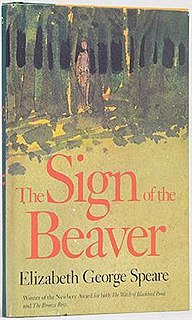 W
WThe Sign of the Beaver is a children's historical novel by American author Elizabeth George Speare, which has won numerous literary awards. It was published in February 1983, and has become one of her most popular works.
 W
WA Skookum doll was a Native American themed doll, sold as a souvenir item in the early 20th century. Although considered collectible, they are not authentic Indian dolls, as they were designed and created by a white woman, and quickly mass-produced.
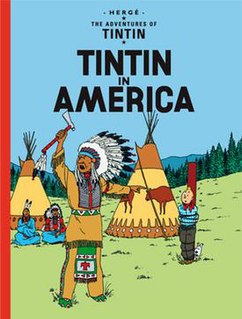 W
WTintin in America is the third volume of The Adventures of Tintin, the comics series by Belgian cartoonist Hergé. Commissioned by the conservative Belgian newspaper Le Vingtième Siècle for its children's supplement Le Petit Vingtième, it was serialized weekly from September 1931 to October 1932 before being published in a collected volume by Éditions du Petit Vingtième in 1932. The story tells of young Belgian reporter Tintin and his dog Snowy who travel to the United States, where Tintin reports on organized crime in Chicago. Pursuing a gangster across the country, he encounters a tribe of Blackfoot Native Americans before defeating the Chicago crime syndicate.
 W
WThe Adventures of Totor, Chief Scout of the Cockshafers is the first comic strip series by the Belgian cartoonist and author Hergé, who later came to notability as the author of The Adventures of Tintin series. It was serialised monthly from July 1926 to summer 1929 in Belgian scouting magazine Le Boy Scout Belge, with a nine month break in 1927. The plot synopsis revolved around the eponymous Totor, a Belgian boy scout who travels to visit his aunt and uncle in Texas, United States. Once there, he comes across hostile Native American tribes and gangsters, each of whom he outwits, before returning to Belgium.
 W
WTourist Trap is a 1979 American supernatural slasher film directed by David Schmoeller and starring Chuck Connors, Jocelyn Jones, Jon Van Ness, Robin Sherwood, and Tanya Roberts. The film follows a group of young people who stumble upon a roadside museum housing mannequins that wield supernatural powers. Schmoeller co-wrote the script with J. Larry Carroll who served as producer for the film alongside famous producer/director Charles Band.
 W
WTrue Women is a 1997 CBS miniseries based on the 1993 novel by Janice Woods Windle directed by Karen Arthur, starring Dana Delany, Annabeth Gish, Angelina Jolie, Julie Carmen, Tina Majorino and Rachael Leigh Cook. It was filmed in Austin, San Antonio, and McDade, Texas. The series covers five decades, from the Texas Revolution through Native American uprisings and the Civil War to the early stages of the women's suffrage movement. This miniseries was first aired on the CBS television network over two nights during May 1997.
 W
WTurok is a first-person shooter video game developed by Propaganda Games, and published by Disney Interactive Studios for the PlayStation 3 and Xbox 360 in February 2008. It was ported on to Microsoft Windows in April 2008.
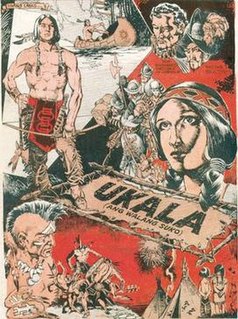 W
WUkala , meaning "Ukala " [i.e. the one who doesn't give up] was a comic strip title in Philippine comics. The main character in the comic book story is Ukala. Ukala was created in the 1950s by distinguished Filipino illustrator Alfredo Alcala. Ukala, the character, was a Native American Indian or "Amerindian". The story, written and illustrated by Alcala for Filipino readers, was about the adventures of Native American Indians set at a timeline when the first Europeans arrived in the Northwestern region of the Americas. Ukala was adapted into film as Ukala , meaning "Ukala " in the Tagalog language. It appeared on the pages of the Philippine comic book named Pilipino Komiks.
 W
WUnto These Hills is an outdoor historical drama during summers at the 2,800-seat Mountainside Theatre in Cherokee in western North Carolina. It is the third-oldest outdoor historical drama in the United States, after The Lost Colony in Manteo in eastern North Carolina, and The Ramona Pageant in Southern California. The first version of the play was written by Kermit Hunter and opened on July 1, 1950, to wide acclaim.
 W
WWild Westing was the term used by Native Americans for their performing with Buffalo Bill's Wild West and similar shows. Between 1887 and World War I, over 1,000 Native Americans went "Wild Westing." Most were Oglala Lakota from their reservation in Pine Ridge, South Dakota, the first Lakota people to perform in these shows. During a time when the Bureau of Indian Affairs was intent on promoting Native assimilation, William Frederick Cody used his influence with U.S. government officials to secure Native American performers for his Wild West. Cody treated Native American employees as equals with white cowboys.
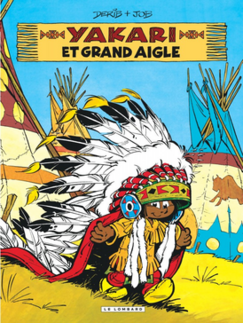 W
WYakari is a Franco-Belgian comic book series, aimed at a younger audience, written by Job and illustrated by Derib, both from Switzerland.